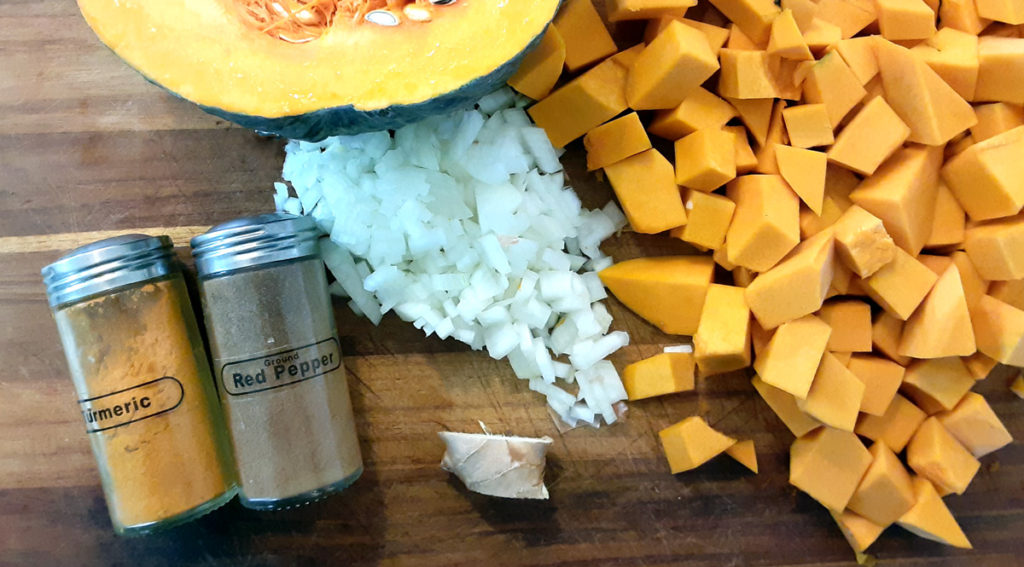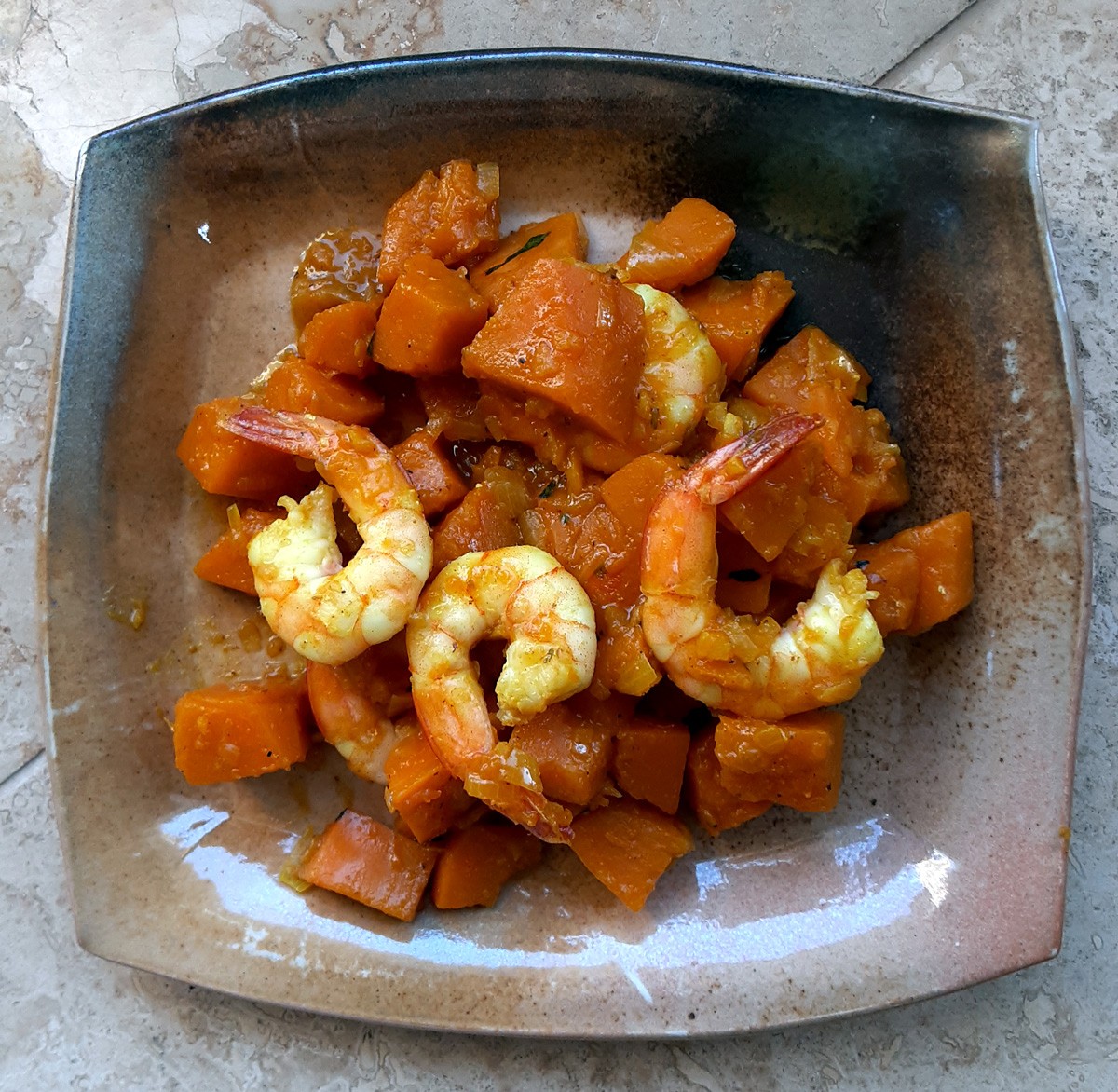This dish is a squash curry from the Bengali cuisine and region of South Asia. It’s light enough for the sweet, vegetal flavors of turmeric and squash (“pumpkin)” to shine through. But even though it cooks quickly, it’s hearty and pungent enough to warm you up inside as a good stew should. Kept simple, with or without the optional shrimp, it’s a great vegetable side dish. Or, include the shrimp, toss in some spinach and bell pepper, cook a pot of basmati rice, and dinner is served!
Why Squash Curry with Shrimp?
It’s delicious! I’ve noticed that, for good reason, shrimp and squash dishes emerged independently in various parts of the globe. Pumpkin curries of Southeast Asia (Thailand, Cambodia, Vietnam, Malaysia) are often made with shrimp. In the Dominican Republic, the national dish sancocho may in some versions include this combination. Across the Caribbean Sea in Guyana, “fry pumpkin” and shrimp is a common dish. Coastal Brazil’s camarão na moranga is, literally, shrimp in a pumpkin. So, many millions of people of diverse heritage agree that this is a winning combination.

What is Bengali Food?
This recipe comes from Bengali cuisine. As the world’s third largest ethnic group, Bengali people live all over the globe. More than 375,000 Bengalis live here in the United States. The vast majority, though, live in Bangladesh and the neighboring eastern regions of India. Bengali cuisine is less heavily spiced than that of much of India, more focused on seafood, and typically served in courses rather than all at once. I consulted several recipes from Bengali bloggers in order to create this recipe. My final recipe is quite similar to one from the cooking blog “Authentic Food From Bengal Cuisine.”
What Kind of Squash is Best in this Dish?
You have two main considerations here. First, you’ll need peeled, cubed squash, and many winter squash are not so easy to peel when raw. Second, you want a squash that holds up well and keeps its shape even when cooked to the point of being soft and sweet. My first choice would be candy roaster, which meets both criteria. Butternut is easy to peel but can sometimes fall apart if cooked too long, especially if freshly harvested. Kabocha, buttercup, and tetsukabuto are other good choices that hold up well, but take a little more work to peel.
Recipe Variations
- Vegetarian (and Vegan): Minus the shrimp, this dish contains no other meat or dairy products.
- Colorful: As written, this shrimp and squash curry dish is entirely yellow/orange, which is nice for a side , but a little one-note for a main. Some versions of mishti kumro may include spinach or other greens (add just at the end until the greens wilt). In south Asia, squash leaves may be used! I think red bell peppers and baby corn would be excellent add-ins, if you want to get creative.
- Protein Switch: If you prefer another meat, such as chicken or beef, or a vegetarian protein like one of my favorites, hempeh, it’s not hard to switch out. Just stir-fry the sliced protein until mostly cooked first, set aside, and add back in with the squash to stew for a few more minutes at the end.

Bengali Squash Curry With Shrimp – Mishti Kumro
Equipment
- Large saute pan with a cover.
Ingredients
- 2 Tbsp oil
- 15 shrimp
- 1 onion, small to medium, chopped small
- 1 inch piece ginger, grated or chopped fine
- 3 cups squash, peeled, seeded, and cubed
- 1 tsp turmeric powder
- ¼-½ tsp red chile powder (like cayenne)
- ¼ tsp oregano
- 1 tsp salt
- ½-1 cup water
- ½ tsp cumin seed
Instructions
- Prepare the shrimp, peel/seed/cut the squash, and chop the onion and ginger.
- Heat half the oil over medium-high heat until sizzling and cook the shrimp quickly on both sides until mostly done, 1-2 minutes depending on the size of the shrimp. Reserve.
- Reduce heat to medium. Add the onion and ginger and cook until fairly soft.
- Add squash.
- Add turmeric, cayenne, oregano, and salt to pan. Stir to cover squash in spices.
- Add one half cup water to pan, stir, and cover. Reduce heat to medium-low.
- Cook until squash is tender, adding water as it is needed to prevent sticking and to end up with some sauce.
- Add the shrimp and cook a little longer to ensure it's done and meld the flavors.
- Sprinkle with cumin seeds (or nigella or onion seed if you have it).
